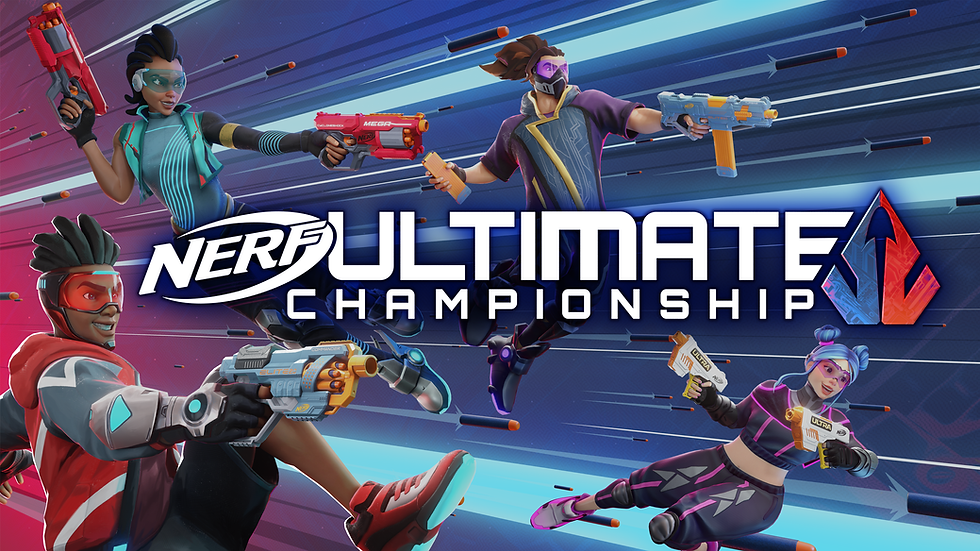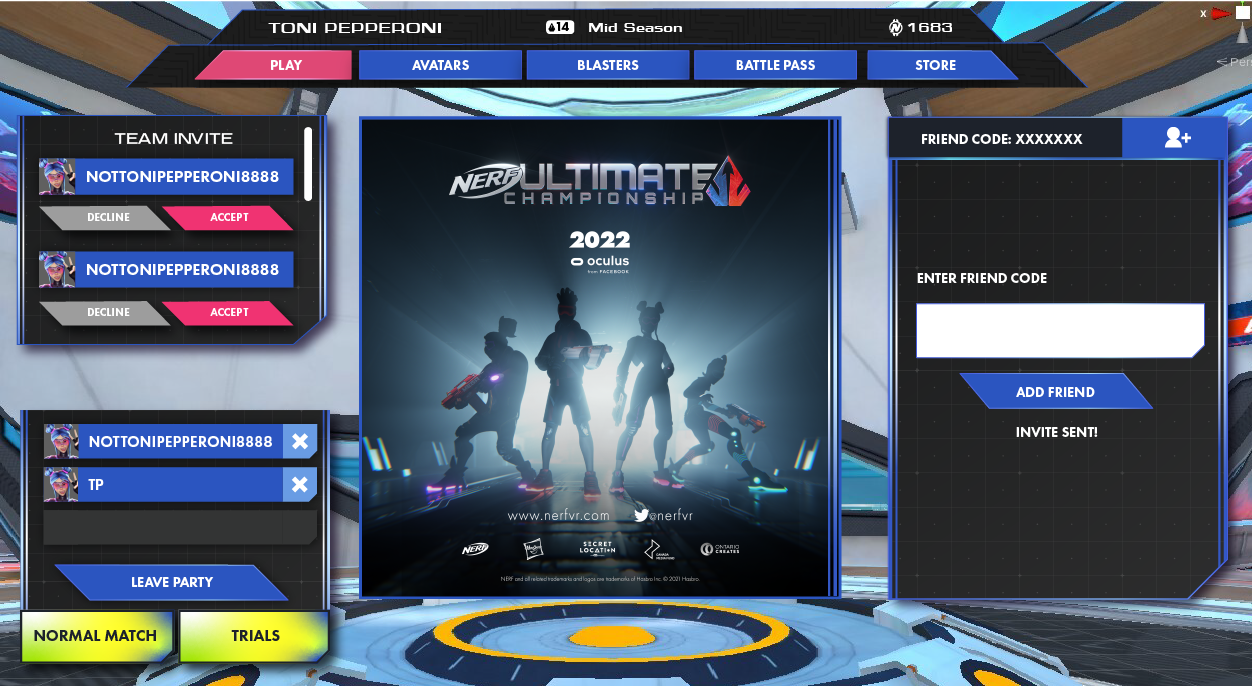
Nerf VR
Hasbro
Branding
UI/UX Design
Production
Nerf Ultimate Championship brings the thrill of real-life Nerf battles into virtual reality with fast-paced, 4v4 multiplayer gameplay. Built for Oculus Quest, the game transforms familiar blasters into dynamic VR weapons across futuristic arenas.
Summary
As Lead Designer and UI Designer, I was responsible for crafting a clear, immersive interface that could stand up to the chaos of competitive gameplay—all while staying true to the NERF brand. My role expanded beyond in-game UI to include motion graphics, trailer storyboarding, 3D model posing, and visual asset production for marketing and platform stores. This case study highlights how thoughtful, adaptive design can unify gameplay, brand, and marketing into one cohesive experience—especially in emerging spaces like VR.
Challenge
Challenge With the rise of affordable VR headsets—especially the Oculus Quest 2—there was a growing demand for accessible, team-based multiplayer experiences in virtual reality. NERF’s strong presence in the physical world made it a perfect candidate for an interactive digital counterpart, but there were key challenges to address: How do you translate the chaotic energy of a Nerf battle into a cohesive VR shooter that feels tactical but fun? How do you design UI that works cleanly in VR, where text, motion, and readability are all affected by headset limitations? How do you create an interface that’s visually on-brand, intuitive for teens and tactical shooter fans, and bold enough to read well in virtual 3D space? And finally, how do you make the most of a small, agile team in a fast-moving production environment?
Solutions
We created a high-energy social and competitive experience that lived up to the NERF name—reimagined for VR. At the core of the player journey was a social hub, where users could gear up, invite friends, customize avatars, and launch into game modes.
As UI Designer, I designed bright, bold interfaces that were readable, responsive, and fully immersive. I used thick outlines and large hit areas to ensure clarity in VR, keeping accessibility and headset performance in mind. Decorative elements were kept minimal to reduce noise, while still embedding brand elements through in-world objects and “card”-based content containers.
These UI cards became a visual anchor for the entire experience and evolved into a motif for both gameplay and marketing—creating continuity between in-game interaction and promotional materials.
Beyond UI, I also:
Designed motion graphics to support in-game transitions and marketing videos
Posed and rendered 3D character models for trailers and store pages
Created storyboards for marketing trailers
Developed app store visuals, from hero banners to promotional screenshots, aligning with platform specs
This full-stack design approach ensured the brand experience was consistent from headset to homepage.
Process
Our team consisted of producers, project managers, developers, 3D artists, a game designer, and myself. I collaborated closely with every department to ship features quickly and thoughtfully.
My daily workflow included:
Collaborating with developers on how UI assets should behave and animate in 3D space
Exporting optimized production assets for in-game implementation
Working with marketing leads to pose 3D models and design creative materials for trailers, key art, and platform store presence
Testing UI visibility and readability within the Oculus Quest headset to ensure nothing was lost or distorted during gameplay
Iterating with stakeholders to refine visual hierarchy, player flows, and user behavior in the social hub
The interface and user flow were deeply tied to tactical shooter UX norms, but tailored for VR’s limitations. We kept menus spacious, interactions intuitive, and feedback immediate.
Results
Successfully launched on Oculus Quest, gaining strong visibility within the VR shooter niche
Delivered a robust UI system that scaled across multiplayer, social, and customization experiences
Created a cohesive brand aesthetic that carried across gameplay and marketing
Helped the studio expand its reputation as a capable developer of immersive VR experiences tied to major IPs
Process











